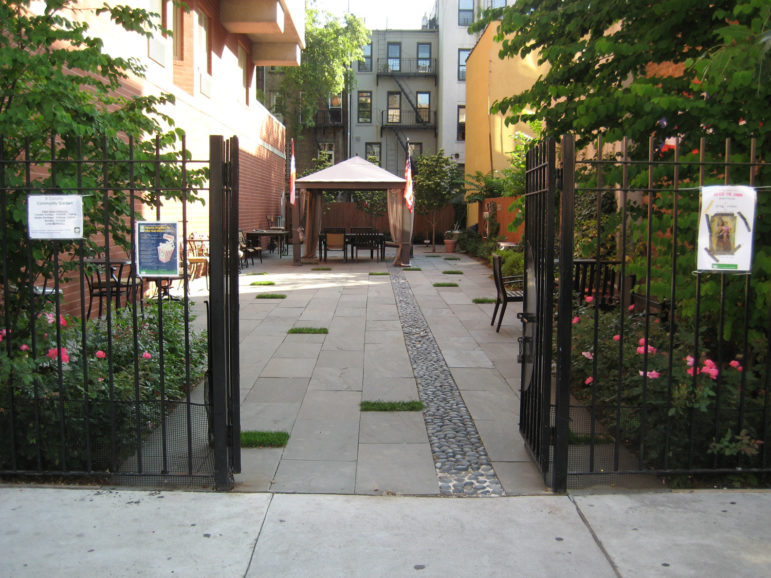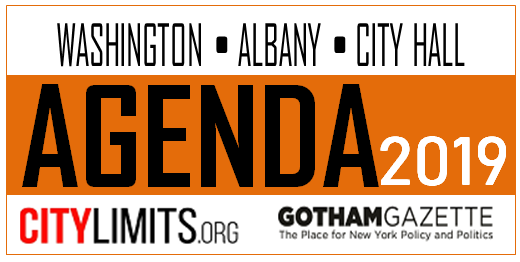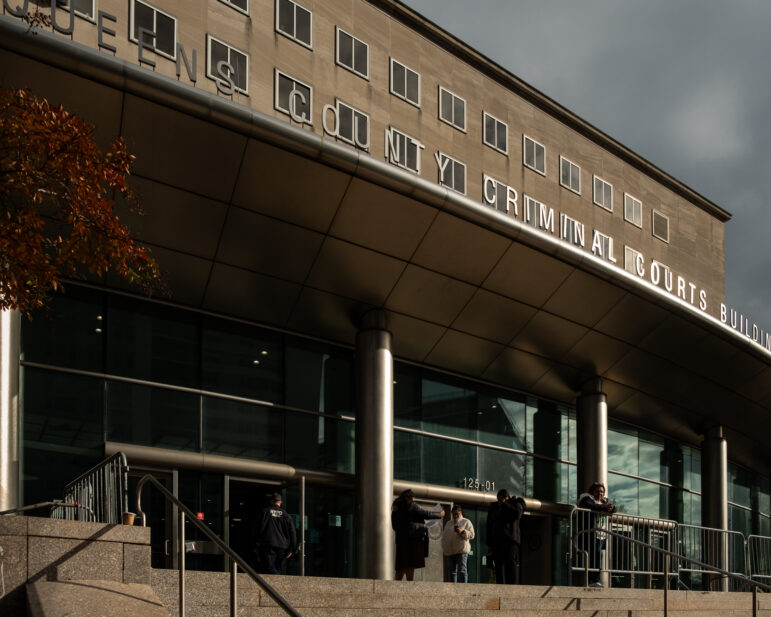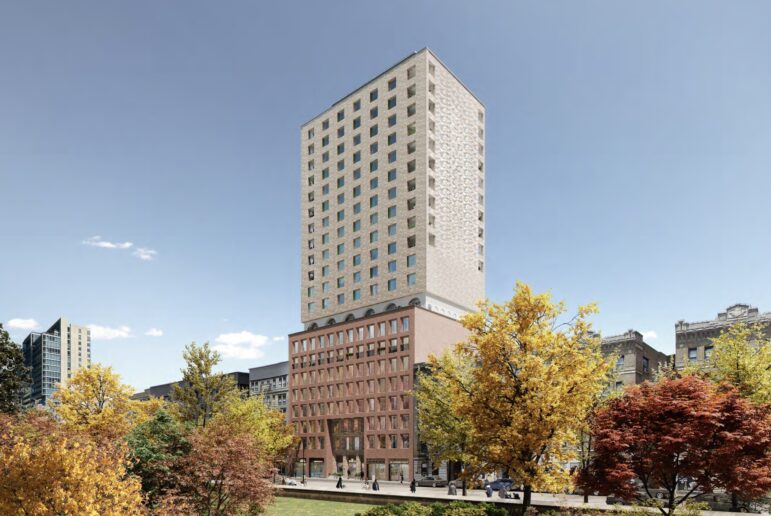
NYRP
El Cataño Garden, an East Harlem community garden
Jose Reyes is an unlikely community crime-fighter. The 65-year-old retired mechanic is the de facto mayor of the El Cataño Garden, an East Harlem community garden that is part of a growing network of green spaces maintained by New York Restoration Project. Jose sweeps the paths and shovels snow. He plays dominos with his brother Raul and neighborhood friends.
He is also helping to prevent more than 200 felonies per year in his neighborhood. That’s according to a new study, commissioned by New York Restoration Project, that shows transforming derelict lots into green space lowers crime rates. The study compared similar neighborhoods side by side, those with green investment from NYRP, and those without, and the difference was striking.
El Cataño is unusual because it is within walking distance to 10 schools and five New York City Housing Authority properties. Meanwhile a quarter of New York’s residents, many of them living in low-income neighborhoods, do not live within a 10-minute walk of any park.
El Cataño, and other parks like it, represent a simple solution to help reduce the “green divide” in New York City. This division between the haves and the have-nots gives higher-income New Yorkers a distinct health advantage. Green spaces can help to reduce rates ofasthma, childhood obesity, and heart disease, along with loneliness and depression. University of Pennsylvania and UCLA researchers recently found that when people with self-reported poor mental health lived near greened vacant lots, their depressive symptoms decreased by 63 percent.
But these health benefits of green space are just the tip of the iceberg. Green space, crucially, is social infrastructure that sets the stage for community engagement. Parks are a vital “third place” aside from work and home that knits neighborhoods together for the common good. That’s why since 1995, New York Restoration Project (NYRP), the non-profit organization that I lead, has renovated vacant land, transformed neglected parks into vibrant community spaces, and partnered with the city to plant 1,000,000 trees in the city’s most underserved neighborhoods.
In his new book, Palaces for the People, Eric Klinenberg describes vastly different outcomes for people living in similar, underserved neighborhoods during a Chicago heatwave. What made all the difference? The bonds between people—the social capital—that drove neighbors to check on and help each other.
NYRP has always believed that urban parks are a powerful form of social infrastructure that nurtures the growth of social capital. We’ve believed that not only can increased social capital improve outcomes during natural disasters, but it can also decrease crime.
Now we can prove it.
This first-ever citywide study has shown striking reductions in crime, including gun violence, correlated with increased access to thriving green space. The study, prepared by independent consulting group, Glass Frog Solutions, compared crime rates before 2003 to crime rates after 2003 in communities involved in NYRP’s “greening” projects, compared to a comparison group of nearby neighborhoods with similar demographics and baseline crime rates.
Researchers found there were an average of 213 fewer felonies each year in neighborhoods with high levels of NYRP green investment versus demographically similar neighborhoods without NYRP investment. East Harlem, home to the El Cataño garden, was one of the neighborhoods profiled in the study.
If East Harlem’s green renaissance can protect its residents from 213 felonies per year, what could be achieved across the city?
We at NYRP are urging the city of New York to develop a comprehensive citywide plan to reduce the green divide, rehabilitate abandoned lots, and grow social capital in underserved neighborhoods. We can anticipate some challenges. So let’s address them.
Where would all this land come from? For sure, land is the most valuable commodity in New York City, where the price per square foot of housing in Soho tops $2100 and a parking spot in Tribeca can cost $400,000. But, in fact, there is unused land throughout the five boroughs that, when put together, is twice the size of Central Park. It’s all owned by the city, and rather than remaining dilapidated and vacant, it could serve as a powerful catalyst for growing social capital and reducing crime by being turned into thriving community green spaces.
How do we pay for it? Creating a vibrant network of small parks is a low-cost community policing, public health and environmental planning strategy. The investment—a combination of land donation from New York City and private funding from individual and nonprofit donors—would not take a bite out of the city’s yearly budget.
Won’t it take decades? We don’t think so. The City of New York planted one million trees with our help in less than 10 years—the first city to do this. We have 20 years of experience in getting this job done. And we are relentless in our pursuit of partnerships with organizations and individuals who share our vision and are ready to commit hours and dollars to this mission. But we have to start now.
The Bottom Line: This new study should serve as an urgent alarm to city planners, public health officials and public safety leaders. To reduce crime, we need fewer vacant lots. It’s a proven, cost-effective strategy that empowers neighborhoods and improves quality of life for residents.
As a first step, we need the many city agencies that own or manage vacant land parcels to come together to solve this problem. Break down these silos, inventory abandoned parcels and evaluate their suitability for rehabilitation. A commitment to increasing green space will take a commitment of political will.
The clock is ticking. Other future community crime-fighters, like Jose Reyes, are eager to take back their neighborhoods, one green space at a time.
Deborah Marton is the executive director of the New York Restoration Project (NYRP).









2 thoughts on “CityViews: Want to Fight Crime? Invest in Parks!”
WoW, this is my Dad’s Garden??????
This is just wonderful! And they really care for their garden!